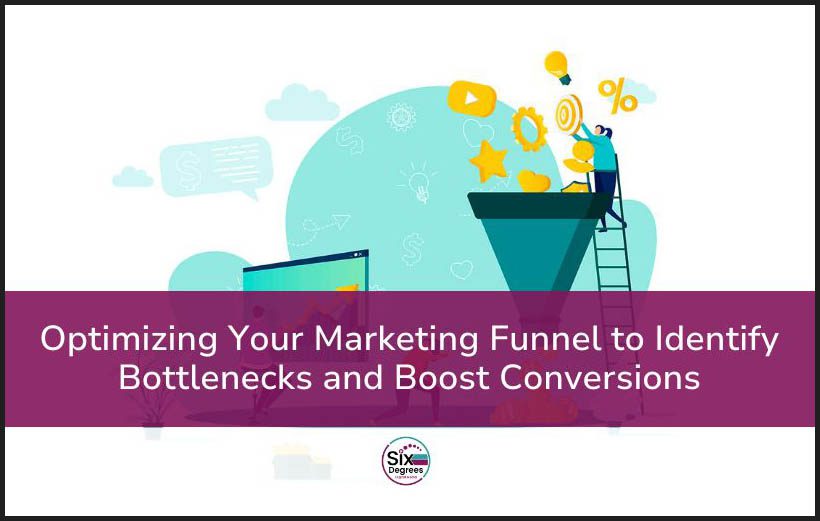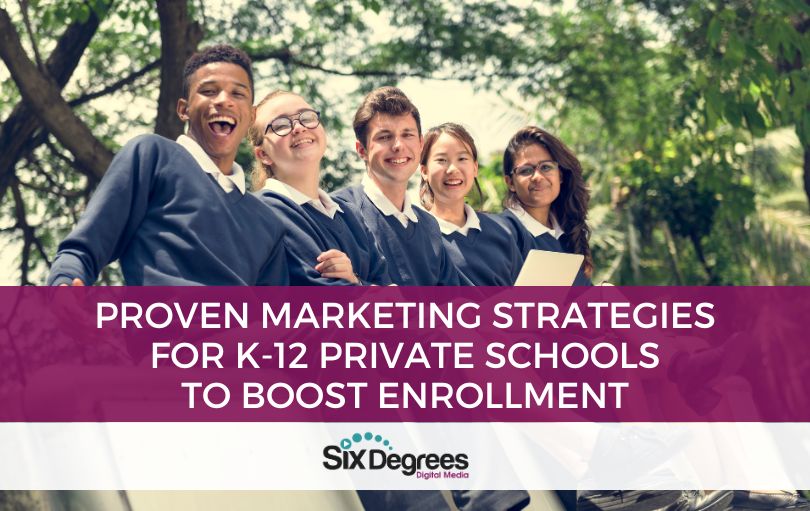Crafting a compelling webinar experience relies on one thing: Value-driven content.
It doesn’t matter how flashy your slides are or how much money you pour into paid ads if your content falls flat.
What matters is what you have to say and how you say it. Does your content provide value to your audience, and can you present it in a way that captivates them?
In this part of our series on crafting the perfect webinar, we’re going to cover exactly how to make content that will wow your audience and make them excited for your CTA.
Value over Promotion
Instead of focusing on self-promotion, the key to a successful webinar lies in addressing the real challenges and questions that our audience faces.
For instance, consider hosting webinars like “10 Proven Strategies to Boost Your Online Sales” where attendees can learn actionable techniques to enhance their e-commerce businesses. Alternatively, webinars such as “Mastering Social Media: Tips and Tricks for Small Businesses” can provide practical insights to entrepreneurs struggling with their online presence.
Educational webinars are another great avenue to deliver value. Topics like “Digital Marketing Demystified: A Step-by-Step Guide” or “Financial Planning for Startups: Smart Money Management” offer valuable knowledge that participants can apply in their professional lives.
Furthermore, consider organizing interactive Q&A sessions with industry experts. For instance, a webinar titled “Ask the Experts: Your Burning Marketing Questions Answered” allows attendees to directly interact with professionals, gaining personalized advice and solutions to their specific challenges.
Webinars should serve as knowledge-sharing platforms, offering real solutions, expert guidance, and practical tips that attendees can implement for tangible results. By focusing on delivering genuine value, businesses can foster trust, credibility, and long-lasting relationships with their audience. Remember, the true power of webinars lies in their ability to educate, inspire, and empower participants, making each event a valuable experience.
Creating a Great Introduction for Your Webinar
A compelling introduction immediately captures your audience’s attention, making them eager to delve into the content. It provides clarity by outlining the purpose of the webinar, ensuring participants know what to expect. Take a look at these important traits every introduction should have:
Clarity, Relevance, and Intrigue
- Clarity: Ensure your introduction is clear and concise. Clearly state the topic and objectives of the webinar. Avoid jargon and technical language that might confuse your audience.
- Relevance: Relate your topic to your audience’s interests or pain points. Demonstrating the relevance of your content immediately establishes a connection and encourages active engagement.
- Intrigue: Infuse your introduction with intriguing facts, statistics, or questions. Intrigue captures attention, creating a sense of curiosity that keeps your audience hooked.
What Tone Should Your Introduction Have?
- Authoritative: If your topic demands expertise and credibility, adopt an authoritative tone. Confidence in your introduction establishes trust and positions you as a knowledgeable source.
- Conversational: For a more informal or friendly webinar, opt for a conversational tone. Engage your audience as if you were having a one-on-one conversation. This approach fosters a sense of intimacy and comfort.
- Inspirational: If your goal is to motivate and inspire, infuse your introduction with passion and positivity. Share compelling stories or quotes that resonate emotionally, inspiring your audience to take action.
Aligning the tone with your content is essential. It creates a seamless transition between the introduction and the main discussion, ensuring a cohesive webinar experience.
Key Takeaway
Your introduction is the foundation for your entire webinar.
Delivering Valuable Content: The Heart of Your Webinar Experience
As your webinar transitions into its core content, the focus shifts to delivering a rich and meaningful experience that resonates deeply with your audience. It’s not just about the information you provide; it’s about how you present it, ensuring that every attendee leaves with valuable takeaways. In this section, we explore the fundamental elements of delivering content that captivates, educates, and leaves a lasting impression.
Imagine your content as a story waiting to unfold. Every piece of information, every key point, is a chapter that contributes to the narrative. Effective structuring techniques are the backbone of your webinar, ensuring that your information flows seamlessly. A logical sequence acts as a roadmap, guiding your audience from one idea to the next with clarity and coherence.
- Define Clear Objectives: Start by outlining the core objectives of your webinar. What do you want your audience to learn or take away? Clarity in objectives guides the entire content creation process.
- Organize Main Points Logically: Arrange your key points in a sequential manner that flows naturally. Think of your content as a story, with each point building upon the previous one. Create a roadmap where each idea logically leads to the next, ensuring a smooth progression of information.
- Use Clear Transitions: Smooth transitions between topics or sections help your audience follow the narrative. Utilize phrases like “Now that we’ve discussed…,” signaling the shift to a new concept. Clear transitions maintain the coherence of your presentation.
- Utilize Visual Aids: Incorporate visuals, such as charts, graphs, or diagrams, to illustrate complex concepts. Visuals enhance understanding, providing a visual thread that connects different points and aids in the logical flow.
The Art of Weaving Compelling Narratives: Breathing Life into Data
Statistics and data, while valuable, can often feel dry and disconnected. Herein lies the power of storytelling. Compelling narratives transform raw facts into relatable, human experiences. Stories evoke emotions, creating a connection that resonates with your audience.
They breathe life into data, making complex information more accessible and memorable. By skillfully weaving narratives into your content, you can make sure that attendees not only grasp the information but also connect with it on a personal level.
- Identify Relatable Anecdotes: Personal or industry-related anecdotes humanize your content. They provide context and emotional resonance, allowing your audience to connect with the material on a deeper level. Real-life stories transform abstract concepts into tangible experiences.
- Craft Engaging Case Studies: Case studies offer a real-world application of your topic. Detailing challenges, solutions, and outcomes provides a narrative structure that showcases the practical relevance of your content. Analyze cases relevant to your audience, illustrating how the discussed concepts work in practical situations.
- Invoke Imagery and Sensory Details: Use descriptive language to evoke mental imagery and sensory experiences. Engage the audience’s senses by describing scenes, sounds, or emotions related to your topic. Vivid imagery makes your content vivid and memorable, enhancing the impact of your narrative.
- Utilize Metaphors and Analogies: Metaphors and analogies simplify complex ideas by comparing them to familiar concepts. They bridge the knowledge gap, making intricate concepts accessible. Analogies create mental hooks, helping your audience grasp new information by relating it to something they already understand.
Balancing Complexity and Simplicity
Webinar attendees vary widely in their knowledge levels and expertise. Catering to this diversity is a delicate art. Your content must strike a balance, offering depth without overwhelming novices and complexity without boring experts.
Strategies such as layering information, providing additional resources for deeper dives, and integrating interactive elements tailored to different proficiency levels ensure that every attendee finds value in your content. By addressing the diverse needs of your audience, your webinar becomes an inclusive, enriching experience for everyone involved.
Key Takeaway
Incorporating these fundamental elements—logical structuring, compelling narratives, and strategies for diverse audiences—transforms your content delivery into an immersive journey.
Leaving a Lasting Impression
As your webinar draws to a close, the way you summarize your key points and deliver your closing statement can leave a lasting impact on your audience. In this section, we’ll explore techniques to ensure your audience leaves with a clear understanding of your webinar’s significance and a sense of motivation to take meaningful actions afterward.
Summarizing Key Takeaways Effectively
- Revisit Main Points: Summarize the core concepts discussed during the webinar. Reinforce these ideas, emphasizing their importance in solving problems or providing valuable insights.
- Use Clear Language: Communicate your key takeaways using simple, clear language. Avoid jargon or technical terms that might confuse your audience. Speak directly to the essential points, ensuring they resonate with everyone, regardless of their expertise level.
- Highlight Actionable Insights: Point out actionable insights derived from the webinar. These are the practical steps or strategies your audience can implement immediately. By emphasizing actionable points, you provide tangible value that attendees can apply in their personal or professional lives.
Crafting a Memorable Closing Statement
- Inspire and Motivate: Your closing statement should inspire and motivate your audience. Reiterate the importance of the discussed topics and how they can make a difference. Use motivational language to instill a sense of purpose and determination in your listeners.
- Invoke Emotion: Connect with your audience on an emotional level. Share stories, quotes, or anecdotes that evoke feelings related to the webinar’s themes. Emotion creates a lasting memory, ensuring your message lingers in the minds and hearts of your attendees.
- Express Gratitude: Thank your audience for their time and participation genuinely. Expressing gratitude demonstrates appreciation and fosters a positive connection. A thankful tone enhances the overall experience, leaving a favorable impression on your listeners.
Key Takeaway
An effective conclusion reinforces the main ideas in a concise yet impactful manner.
Exploring Call-to-Action Strategies
- Define Clear Actions: Clearly outline the actions you want your audience to take post-webinar. Whether it’s subscribing to a newsletter, downloading a resource, or participating in a follow-up discussion, be explicit about the steps you want them to follow.
- Offer Additional Resources: Provide additional resources, such as ebooks, guides, or further reading materials, related to the webinar topic. These resources serve as valuable extensions of the webinar, deepening participants’ understanding and engagement.
- Encourage Interaction: Invite attendees to engage in discussions on social media platforms, web forums, or dedicated webinar communities. Interaction fosters a sense of community and allows participants to continue learning from one another.
A great conclusion will inspire your audience and guide them toward action. By summarizing key takeaways effectively, crafting a memorable closing statement, and implementing compelling call-to-action strategies, you not only leave a lasting impression but also empower your audience to apply their newfound knowledge, transforming your webinar into a catalyst for meaningful change and growth.
Here at Six Degrees Digital Media, we want to help your business incorporate webinars into an overarching content strategy that helps you bring in more business month after month. If you’re interested in seeing what a webinar can do for you, book a free strategy session with us today!






